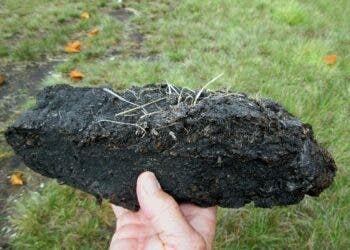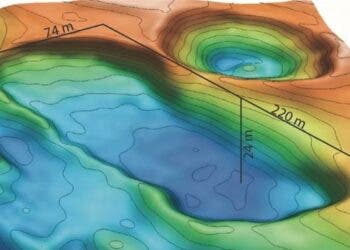Archaeologists working in the Arctic have found evidence that ancient humans made it to the arctic some 45,000 years ago.

Pitulko et al., Science
A team of Russian scientists found the carcass of a woolly mammoth bearing the unmistakable sign of spear wounds. This seems to indicate that humans lived alongside Arctic mammoths or at least went North to hunt them. Vladimir Pitulko, senior research scientist at the Russian Academy of Sciences’ Institute for the History of Material Culture in St. Petersburg, said that the mammoth was killed by hunters 45,000 years ago. This is the earliest indication of humans in the Arctic.
“Indeed, these animals provide an endless source of different goods: food with meat, fat and marrow; fuel with dung, fat and bones; and raw material with long bones and ivory,” Pitulko said.
“They certainly would use them as food, especially certain parts like tongue or liver as a delicacy, but hunting for the ivory was more important,” added Pitulko, with the ivory substituting for wood in the treeless steppe landscape.
Indeed, much of the ivory was chopped off by the hunters, giving more indications of how the mammoth met its demise. Hunting mammoths would have been a crucial part of surviving in the arctic, enabling humans to conquer the the Arctic and trek across northernmost Siberia, moving all the way to the land bridge that then connected Siberia to Alaska. The first humans that crossed that bridge settled in the “New World”, expanding into the Americas.
Until now, the earliest evidence of humans in the Arctic was 30,000 years ago, so it’s quite a push. The finding also seems to indicate that the Alaska-Siberia land bridge was crossed much earlier, which would mean that the Americas were colonized much earlier than previously believed.






